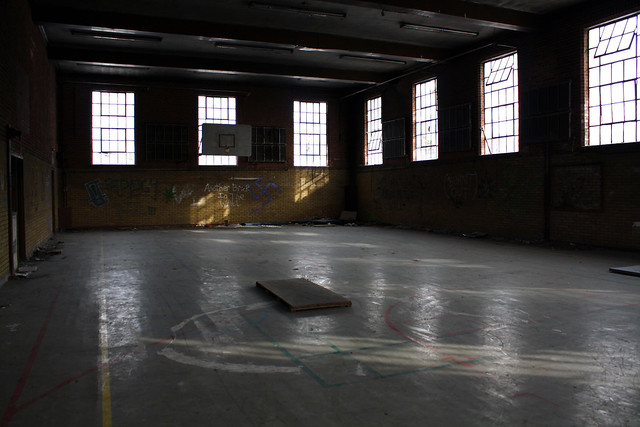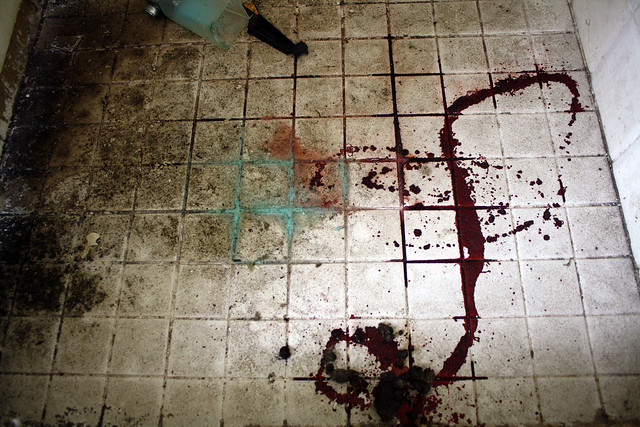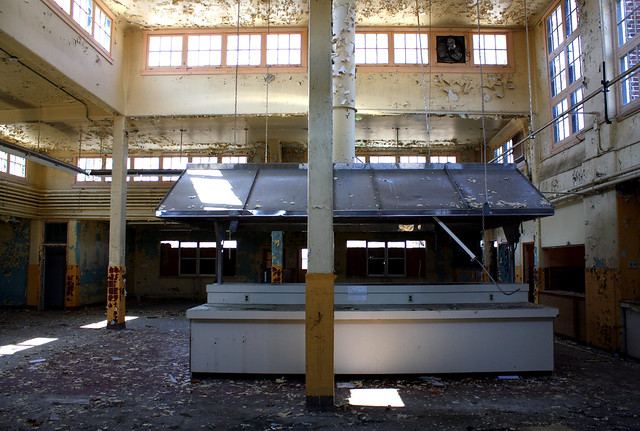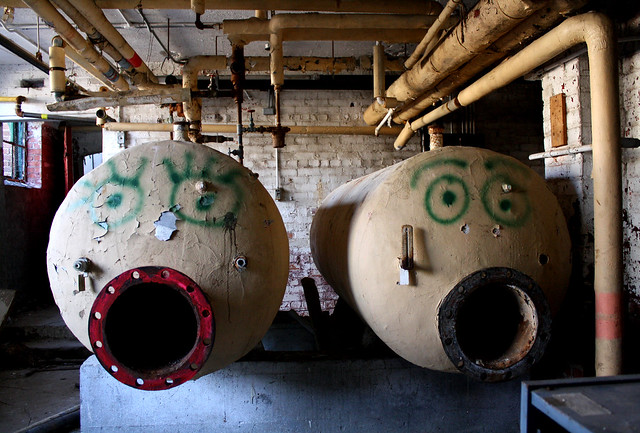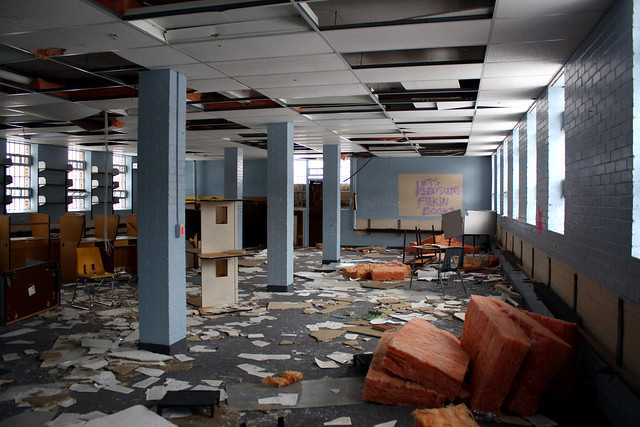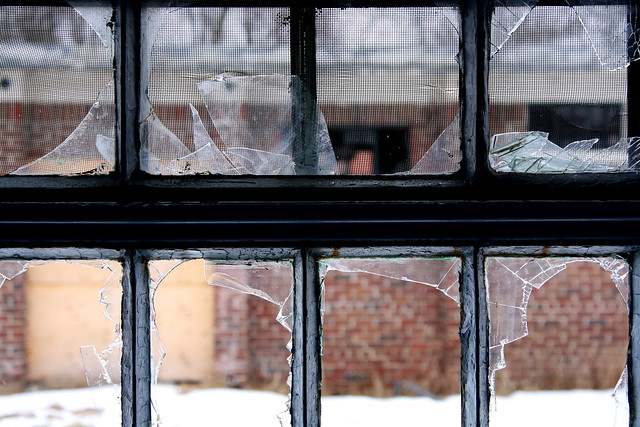Built in the early 1900s, the Camp 30 Nazi Internment Camp in Bowmanville, Ontario, was originally designed and operated as a boys reform school. It is best known however, for its most infamous inhabitants: Nazi Prisoners Of War. Over 880 German prisoners called Camp 30 home during World War II. It was the only overseas Camp to house the highest ranking Third Reich officers and top U-boat commanders, some of whom tried to tunnel their way out of the camp in an elaborate escape attempt. Today, the abandoned buildings are mere skeletal remains of their former selves and salvaging them for their historical value has been the subject of controversy as they continue to deteriorate. As the only remaining Nazi P.O.W. Camp left standing in Canada, Camp 30 is an important cultural and historical site.
The boys reform school was built on 300 acres of land known as the Darch Farm, donated by a local farmer so that the Canadian government could construct a school campus for "unadjusted boys who were not inherently delinquent". It is one of the few campuses of "Prairie School" architecture in Canada. Twenty nine years after opening its doors, the young residents were abruptly evicted in 1941, when the government ordered the school to relocate so that the site could be re-purposed as a World War II P.O.W. Camp. The site was specifically selected because as overseas allies, Canada was the perfect place to house this demographic of prisoners far from the reaches of the enemy. Additionally, it was located just off the main highway in a rural area outside of Toronto, and near Camp X, a spy camp in Whitby. Officials rushed to complete modifications within seven months of the school's eviction, to transform it into a prison: nine guard towers were constructed, barbed-wire fences were erected, and barracks were built for the guards.
Prisoners would later complain of changes that weren't made before their arrival, including short, child size beds, low urinals, and small dorms and eating areas. These would be small sacrifices considering the other luxuries they would be afforded due to the previous use of the buildings. Prisoners were treated to a variety of comforts and entertainment options. They had a gymnasium, indoor swimming pool, theatre, and concert stage. They ran their own newspaper, purchased alcohol, cigarettes and other items from the canteen with their pay cheques, took in lectures from University of Toronto professors and were even allowed to cross country ski off site and swim in Lake Ontario. Some prisoners could simply utter the phrase 'Ehrenwort' to the Canadian guards, a German word for 'Word of Honour', and they'd be allowed to leave the Camp. It is rumoured the Nazi prisoner's even ate better than the people of Bowmanville and Germany, with such delights as bacon,ham, roast pork or beef, potato salad, macaroni, potatoes, eggs and so much more on the menu. Of course, the amenities and luxuries afforded were not enough to stop these highest ranking Nazi prisoners from revolting and trying to escape.
In mid-October of 1942, a riot took place in which prisoners barricaded themselves in the mess hall with hockey sticks and iron bars in protest of a plan to shackle to them. This was an Allied Forces response to Hitler shackling Canadian prisoners overseas. Reportedly the Canadian guards stormed the hall with baseball bats and hours of brawling ensued until high pressure water hoses were used to subdue the prisoners. The event earned the name the “Battle of Bowmanville.”
The most notorious escape attempt occurred in 1943 when Admiral Doenitz ordered the rescue of U-boat commander Otto Kretschmer. An elaborate plan was devised which included sending a submarine down the St. Lawrence river which would wait for Kretschmer at Maisonnette Point off the coast of New Brunswick on September 27. P.O.W.s got to work on the Northeast corner of Victoria Hall (referred to by prisoners as Haus IV) constructing a large tunnel 50x50 cm squared equipped with lighting which was wired in, and a ventilation system made from telescoping tin cans. Supports were installed every 1-2 metres made from pilfered wood from the attics of other buildings in the Camp. Perhaps most ingenious was how the P.O.W.s hid the dirt they were excavating using knives and cans: a trolley system was used and men transported the dirt in buckets through a hole in the ceiling to the attic, where is was evenly distributed.
Unaware that the guards found the tunnel, the Nazi's continued to fill the attic with dirt, one bucket at a time. One would assume that the Allied Forces immediately shut down the escape attempt upon it's discovery, but they did the opposite. Knowing that Hitler or Doenitz would issue another order they allowed the futile mission to continue undisturbed. Until the sky fell, literally. The weight of the accumulated dirt collapsed through the ceiling and the jig was up, for both sides. At that time a 90 metre passage had been dug 4.5 metres underground.
Other tunnel attempts were unsuccessful, as was climbing under the fence and hiding in a laundry truck, as two prisoners would learn. No one managed to successfully escape Camp 30.
Immediately after the war ended, the Nazi prisoners were sent back to Europe and the compound reverted back to a boys training school, until it was shut down in 1979. A school for overseas Malaysian students, St. Stephen's Catholic School and finally a private Islamic Academy all occupied the space before it was abandoned in 2008.
Camp 30 was declared a National Historic Site in 2013, 5 years after immeasurable damage had already been done. While great lengths have been gone to in attempts to keep the buildings sealed, including everything from plywood and metal to giant boulders and massive mounds of dirt covering entrances, people continue to go to even greater lengths to get inside, and the fight to save Camp 30 seems to be to be as futile as the Nazi's escape attempt. By that time, everything from windows and toilets to doors and drywall walls had been smashed. The odd no name illegible tags and swastikas had begun to appear on the walls, some of which already showing initials signs of black mould. The stunning Auditorium had already burned down in an arson, which is commonplace at the site. Doors were ripped from hinges and spongy soggy asbestos carpeted the long hallways in the main dormitory. Too little too late.
Frustratingly, there is little funding available and an apparent overall lack of interest when it comes to investing in preservation of our most interesting and unique historic buildings. One can only assume with the pace of it's rapid deterioration, Camp 30 will likely be a subdivision soon, as developer's had planned before National Historic Site status was finally granted. It is remarkably disconcerting how little we appear to value our Canadian history as it pertains to locations such as this. National Historic Site should mean something, but it's just more bureaucratic jibberish.
A round of applause goes to 'The Architectural Conservancy of Ontario’s Clarington Branch' and the 'Camp 30 Foundation' for their efforts. But without further intervention and investment in the immediate future, it's fate seems sealed.
A round of applause goes to 'The Architectural Conservancy of Ontario’s Clarington Branch' and the 'Camp 30 Foundation' for their efforts. But without further intervention and investment in the immediate future, it's fate seems sealed.
With the prevalence of vandalism and arson, police regularly patrol the area and have been known to issue tickets to trespassers that aren't smart enough to be polite and forthcoming.
My first visit was with Ninja in January 2011 and several dozen return visits have ensued in the following years. On any any given day one can come across no one, or conversely thirty people and two cops on the property in a span of three hours. Couples young and old slowly strolling and holding hands, or walking their dogs, some taking photographs of the overgrowth along the interlinking stone walkways between buildings, never leaving the beaten path. Inside a few of the buildings, you might come across graffiti artists or urban explorers, potheads or skateboarders, and usually a handful of teenagers breaking shit and setting fires. You might even climb over the giant boulder into the old gymnasium one hot sunny afternoon only to find a fire burning inside, or perhaps a solitary candle burning in the same gym another day in midwinter. You might even just drive out there one evening and stay up all night writing rhymes in your black book on the roof of the mess hall, completely alone under the stars, until light peaks over the horizon and reveals the sun kissed Nazi Camp in all it's dilapidated glory. That's been my experience.
I've been caught here three or four times, including once hanging out a window frame by the fire chief, and even busted on an Easter weekend exploring with my brothers and our Mom. Yet to get a ticket or even have a negative experience with authorities at this location.
While Camp 30 is a fascinating place that I love frequenting regularly, it has never really spoken to me from a photographic standpoint. That is until some real graffiti writers finally found the place in 2013/2014 and began to beautify the dying spaces. I've been continually drawn back to experience and photograph the graffiti and the constant changes that take place at such at an active site.
The story continues. The rapid decay and violent destruction of Camp 30 are being caused by both nature and man, but only man can reverse this process and save this National Historic Site, if left in the hands of nature, Camp 30 is doomed.
Lets go back to the beginning. Ninja and I first explored Camp 30 in January 2011 with several return visits taking place in the following four months. These were stealth missions back then. Most of the buildings very well secured and police patrolled the Camp frequently. Ducking in and out between buildings, playing cat and mouse, and winning every time.
Countless visits ensued throughout 2012, but in most cases I was playing tour guide to other groups of friends, family and fellow explorers, and rarely used my camera. At this point access was already getting substantially easier, but the regular patrols continued. Inevitably the damage and decay intensified with each and every visit throughout the year.

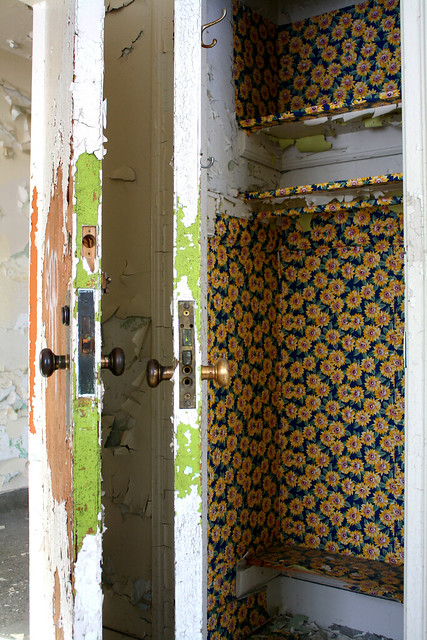














Much of the same continued throughout 2013 and 2014 as the compound became easier and easier to access and talk your way out of, if spotted by police, and the attempts to keep the buildings sealed seemed to grow fewer and farther between. It was during this time period that some real graffiti artists finally touched down. As other locations were getting crossed off the list however, the frequency of my visits definitely slowed significantly.
In April of 2014, on a solo trip, I immediately made my way to the gym/pool building, as is my routine. I climbed up the boulder and squeezed through what was at that time a tiny hole at the top of the door frame. Once inside, the smell of smoke drew me automatically into the gym side of the building. To my surprise, a small fire was burning through the floor of the basketball court, with spray cans in it. I ran through the building and took these shots before I squeezed back outside and called the fire department as I left the property.







In 2015, with all of the buildings easily accessible, I focused my camera almost exclusively on the ever changing canvas that Camp 30 had become. Layers of tags covered some walls, and in some cases, colour and style brought life back to dead spaces. As a street artist and graffiti enthusiast, Camp 30 was becoming one of my favourite locations to photograph, as it had become a playground for some very talented artists.
To see more work by some of these artists check out the Benson Auto Parts Mural I curated in Peterborough.








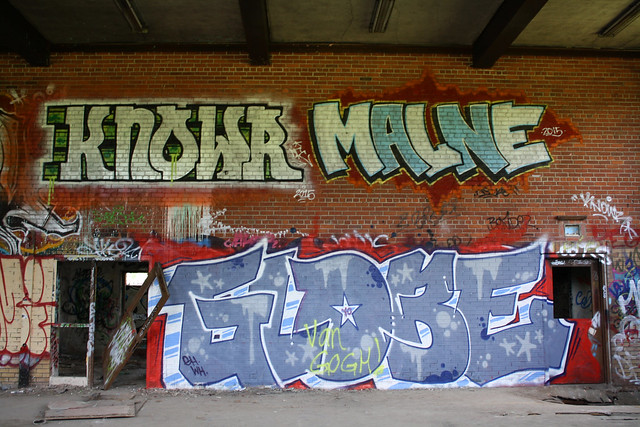







In early February of 2016 I made my most recent visit. I followed that same path to the gym, and climbed inside yet again, albeit much easier than before. Inside, a solitary candle was burning on the basketball court. Kind of a deja vu moment waiting to happen.
Again, I focused heavily on the graffiti, drawing the inspiration from it that led me to finally write this post.
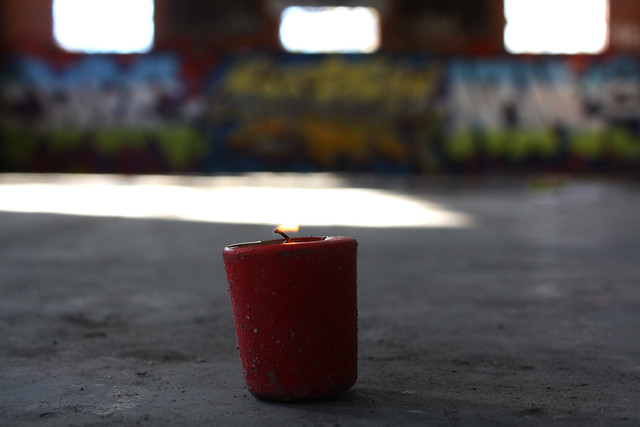



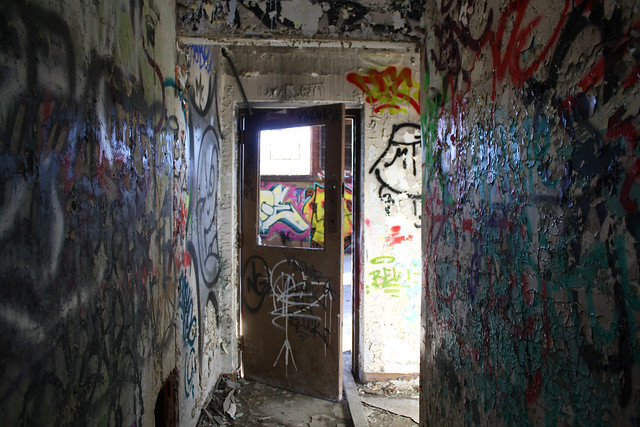






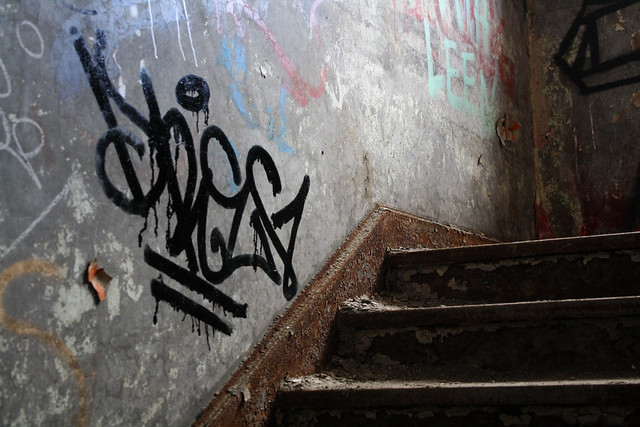
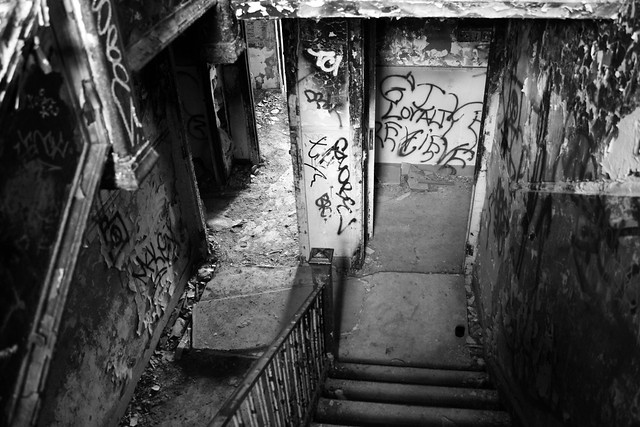










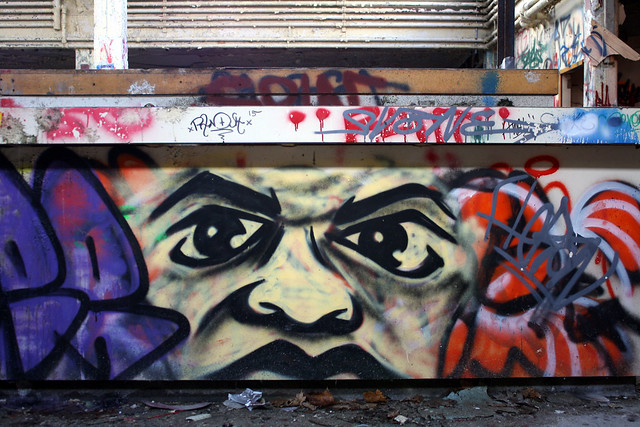









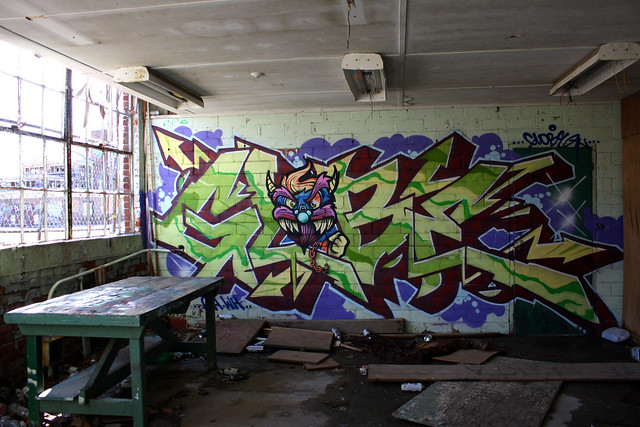
I can't thank you enough for coming along for the 5 year journey.
As of this moment, the future for Camp 30 is uncertain.
Wherever the story goes from here, I'll be there with my camera.
click here to check out all of jerm & ninja IX's ABANDONMENT ISSUES

In April of 2014, on a solo trip, I immediately made my way to the gym/pool building, as is my routine. I climbed up the boulder and squeezed through what was at that time a tiny hole at the top of the door frame. Once inside, the smell of smoke drew me automatically into the gym side of the building. To my surprise, a small fire was burning through the floor of the basketball court, with spray cans in it. I ran through the building and took these shots before I squeezed back outside and called the fire department as I left the property.







In 2015, with all of the buildings easily accessible, I focused my camera almost exclusively on the ever changing canvas that Camp 30 had become. Layers of tags covered some walls, and in some cases, colour and style brought life back to dead spaces. As a street artist and graffiti enthusiast, Camp 30 was becoming one of my favourite locations to photograph, as it had become a playground for some very talented artists.
To see more work by some of these artists check out the Benson Auto Parts Mural I curated in Peterborough.
















In early February of 2016 I made my most recent visit. I followed that same path to the gym, and climbed inside yet again, albeit much easier than before. Inside, a solitary candle was burning on the basketball court. Kind of a deja vu moment waiting to happen.
Again, I focused heavily on the graffiti, drawing the inspiration from it that led me to finally write this post.


































I can't thank you enough for coming along for the 5 year journey.
As of this moment, the future for Camp 30 is uncertain.
Wherever the story goes from here, I'll be there with my camera.
click here to check out all of jerm & ninja IX's ABANDONMENT ISSUES





